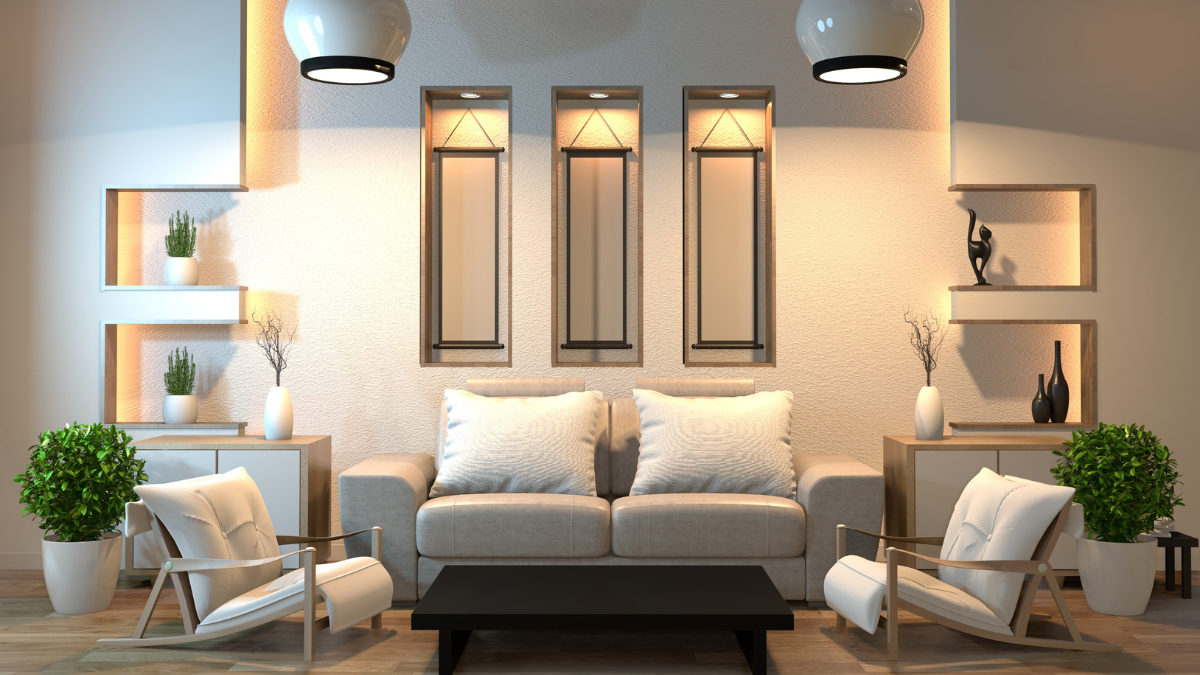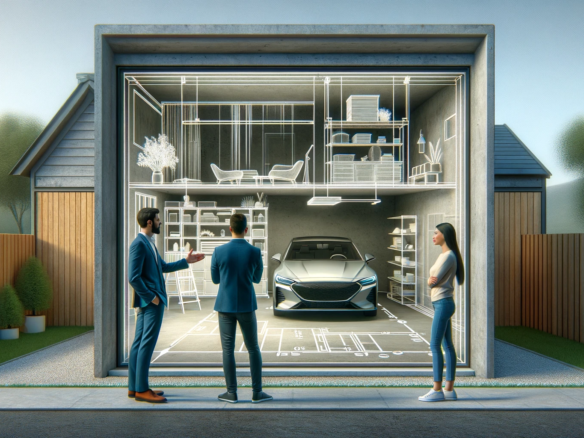What is Home Staging?
Home staging is a crucial aspect of selling a house in today’s competitive real estate market. It involves preparing a home to make it more visually appealing and marketable to potential buyers. The goal of home staging is to showcase the property’s best features. As well as create an environment that allows buyers to envision themselves living there. This is done by strategically arranging furniture and decor, decluttering and organizing spaces, and making necessary repairs or improvements. Home staging helps to create a positive first impression, highlights the home’s unique selling points, and allows buyers to connect emotionally with the space. By presenting a well-staged home, sellers increase their chances of attracting more potential buyers, receiving higher offers, and selling their homes faster. The cost of home staging can vary depending on factors such as the size of the home, the extent of the staging required, the location, and the specific services of the staging professionals hired.
Table of Contents
- What is Home Staging?
- Types of Home Staging Services
- Factors That Affect the Cost of Home Staging
- Average Cost for Home Staging Services
Benefits of Home Staging
Home staging is a crucial step in home selling that can significantly benefit both sellers and potential buyers. By carefully arranging furniture, decor, and personal items, home staging helps create a space that is visually appealing and allows potential buyers to imagine themselves living in the home.
The main benefit of home staging is its ability to help potential buyers visualize the possibilities for the space. By decluttering, rearranging furniture, and creating a warm and inviting atmosphere, home staging showcases the true potential of the property. This can help buyers see how they could personalize the space to suit their needs and preferences.
Additionally, staging makes the home appear move-in ready. By addressing any necessary repairs, deep cleaning, and adding fresh paint or neutral colors, staging presents the property in its best light, increasing its marketability. The appeal of a move-in ready home can be a strong selling point for potential buyers.
Studies have shown that staged homes often sell faster and for a higher price than unstaged homes. By highlighting the home’s best features and creating an appealing atmosphere, staging attracts more buyers. It increases the likelihood of receiving multiple offers. It also enhances the online listing photos, which is crucial in today’s digital age, where most buyers begin their search online.
Types of Home Staging Services
There are several types of home staging services available to homeowners looking to enhance the appeal of their property. One option is partial staging, where a professional stager focuses on key rooms or areas of the home that need the most attention. This can include the living room, kitchen, or primary bedroom. Another option is soft staging, which uses minimal furniture and decorative elements to create a more neutral and inviting space. Virtual staging is a popular choice for vacant homes, where furniture and decor are digitally added to listing photos to give potential buyers a sense of how the space could be furnished. Additionally, some staging companies offer vacant home staging services, providing all the necessary furniture and accessories to fully furnish an empty property. These different home staging services cater to different needs and budgets, allowing homeowners to choose the option that best suits their situation.
Furniture Rental & Purchase
Regarding home staging, furniture creates an appealing and inviting space. Two options for obtaining furniture for staging purposes are renting and purchasing.
Furniture rental allows homeowners and professional stagers to furnish a home to showcase it to potential buyers temporarily. The average cost of furniture rental varies depending on factors such as the size of the home, the duration of the rental period, and the quality of the furniture. Generally, the cost can range from several hundred to several thousand dollars.
One of the main advantages of furniture rental is the flexibility it provides. Homeowners can choose from various styles and designs to suit their target market. Additionally, they can easily swap out furniture if needed. However, renting furniture can be an ongoing cost, particularly for long-term staging needs.
On the other hand, purchasing furniture for staging allows homeowners to use the furniture beyond the staged period and potentially save on rental fees. While the upfront cost may be higher, it offers long-term value and the ability to use the furniture in future properties. However, purchasing furniture requires careful budgeting and may not be cost-effective if staging needs are temporary.
Professional Home Stagers & Companies
Professional home stagers and companies play a crucial role in home staging, transforming properties to attract potential buyers and create a visually appealing and marketable space. These professionals offer a range of services to enhance the overall presentation of a home.
One of the main services provided by professional home stagers is furniture rental. They have access to a vast inventory of furniture and decor items that can be temporarily placed in the home, making it look inviting and functional. This includes everything from sofas and dining sets to artwork and throw pillows. Additionally, professional stagers can also handle prop shopping, sourcing unique and stylish items that add personality to the home.
Another critical aspect of their services is styling. Professional stagers have an eye for design and understand how to create a cohesive and aesthetically pleasing atmosphere. They strategically place furniture, arrange accessories, select colors that appeal to the target market, and highlight the home’s best features.
Working with professional home stagers and companies offers numerous benefits. Their expertise in staging can significantly impact the sale of a property, potentially leading to quicker sales and higher sale prices. They understand the real estate market, know how to highlight a home’s best features, and can create a warm and inviting atmosphere that appeals to prospective buyers.
Whether staging a vacant or occupied home, professional stagers can tailor their services to meet the specific needs of the property. For vacant homes, they can transform empty spaces into fully furnished and staged rooms that help potential buyers visualize living in the property. For occupied homes, they can work with existing furniture and decor, rearranging and decluttering to create a more appealing and marketable space.
Virtual Staging Services
Virtual staging services have become increasingly popular for sellers who want to showcase their properties online without the expense of physical staging. This innovative approach lets sellers digitally enhance their listing photos by adding furniture and décor, creating an appealing and inviting environment for potential buyers.
The process of virtual staging involves the use of advanced photo editing software to seamlessly integrate virtual furniture and décor into the existing photos of the property. Professional virtual stagers have the expertise to accurately scale each piece of furniture, ensuring that they fit perfectly into the space and blend harmoniously with the surroundings.
Virtual staging offers a range of options to transform listing photos. Sellers can remodel rooms virtually, changing paint colors, flooring, and even structural elements. They also can add or remove furniture and artwork, creating a personalized and stylish atmosphere that aligns with the target market.
One of the major advantages of virtual staging is its cost-effectiveness. While physical staging requires the rental and transportation of furniture, virtual staging eliminates those expenses. The cost of virtual staging can range from as low as $35 per room to around $1,000 for more labor-intensive projects. This affordability makes it an excellent option for sellers who want to enhance their online listing without breaking the bank.
Factors That Affect the Cost of Home Staging
Regarding home staging, the cost can vary depending on various factors. One of the main factors is the size of the property. Larger homes typically require more furniture and décor to properly stage the space, resulting in higher costs. Another factor is the extent of the staging. Some sellers may opt for a full staging package, which involves staging every room in the house, while others may choose to stage only a few key rooms. The level of staging, whether it be soft staging or full staging, can also impact the cost.
Additionally, the condition of the property plays a role. If the home requires minor repairs or deep cleaning, those additional costs will be factored into the staging fee. The location of the property is another consideration. Homes in upscale neighborhoods may require a higher staging level to attract potential buyers, resulting in a higher cost. Lastly, the duration of the staging can affect the overall cost. Longer staging periods may require additional fees for furniture rental and maintenance. These factors help sellers determine the most suitable staging services for their needs and budget.
Size of the Property & Square Footage
The size of a property and its square footage can have a significant impact on the cost of home staging. When staging larger homes, the expenses tend to be higher compared to smaller properties.
One of the main reasons for this is the need for more furniture to fill the space. Larger homes have more rooms and living areas that require staging, which means more furniture and decor items are needed. This can lead to higher rental costs for the additional necessary furniture to stage the larger space effectively.
Additionally, multistory homes add another layer of complexity to the staging process. Not only does the home’s layout need to be considered, but there may also be a need for additional staff to manage the staging of multiple floors. This can result in additional costs to ensure that every area of the property is staged correctly.
When budgeting for home staging, it’s essential to take the size of the property and square footage into account. Larger homes will typically require more furniture and more staff, which can impact the overall staging cost. Working with a professional staging company can help provide accurate estimates based on the specific requirements of your property.
Upscale Neighborhoods & Larger Homes
In upscale neighborhoods and larger homes, the cost of home staging services can be significantly impacted. This is due to various factors, including the higher expectations of prospective buyers in these areas and the increased square footage that needs to be furnished and staged.
In upscale neighborhoods, prospective buyers often have higher standards and expectations when it comes to the presentation of a property. They expect to see a home that not only meets their functional needs but also exudes a sense of luxury, style, and sophistication. As a result, the staging of homes in these areas requires careful attention to detail and high-quality furnishings and decor.
Larger homes also pose unique challenges and considerations when it comes to staging. With more square footage to furnish and stage, the cost of furniture rental and staging resources can increase significantly. Additional furniture may be required to fill the extra rooms and living areas, ensuring every space feels inviting and well-dressed. Staging professionals may also need to allocate more time and resources to properly stage and showcase the various rooms and features of a larger home.
Overall, the size and style of homes in upscale neighborhoods and larger properties contribute to higher home staging costs. The need to meet the higher expectations of prospective buyers and effectively furnish the increased square footage requires additional furniture rental and staging resources. Staging professionals in these areas must go above and beyond to create an appealing and desirable living environment that resonates with the target market.
Initial Consultation Fee & Deep Cleaning Costs
The initial consultation fee plays a crucial role in the home staging process. This fee covers the review of the home by a professional stager who provides recommendations on how to enhance its appeal to potential buyers. During the consultation, the stager assesses the property’s strengths and weaknesses. It develops a personalized staging plan tailored to the specific needs and style of the home.
Deep cleaning is an essential aspect of preparing a property for successful staging. A clean and well-maintained space creates a positive impression on potential buyers. It enhances the overall presentation of the home. The costs associated with deep cleaning may vary depending on the size and condition of the property. Factors such as the number of rooms, the level of dirt and grime, and any special cleaning requirements will influence the final cost.
Investing in deep cleaning is well worth it, as it significantly improves the overall appeal of the property. It removes unpleasant odors, eliminates stains, and ensures a fresh and inviting atmosphere that prospective buyers will appreciate. A clean and well-maintained space creates a blank canvas for staging, allowing the professional stager to showcase the property’s key features and highlight its full potential.
Curb Appeal & Personal Items to Remove/Add
Curb appeal is a crucial factor in attracting potential buyers and making a favorable first impression. Improving the exterior of a home can significantly increase its appeal and overall value. Here are key factors to consider for enhancing curb appeal:
- Landscaping: Maintaining a well-manicured lawn, trimming hedges and trees, and adding colorful flowers or plants can instantly improve the visual appeal of a home.
- Exterior Maintenance: Ensuring the home’s exterior is in good condition, with fresh paint or pressure washing, clean windows, and repaired or replaced siding can make a significant difference.
- Entryway: The front door should be well-maintained and freshly painted if necessary. Adding a new doormat, an updated door handle, or a few potted plants can create an inviting entrance.
- Lighting: Installing outdoor lighting fixtures or replacing outdated ones can enhance the home’s look during evening showings. This can also improve safety and security.
When it comes to personal items, it’s essential to remove personal touches to help potential buyers envision themselves living in the space. Here are some items to remove:
- Family Photos: Removing personal pictures allows buyers to imagine their own memories in the home.
- Excessive Clutter: Decluttering the living spaces and removing excessive furniture or decorations can make rooms appear larger and more inviting.
- Highly Personalized Decor: Unique or bold decor choices may not appeal to everyone, so it’s best to opt for neutral colors and styles with broader appeal.
Additionally, adding neutral and tasteful decor items can help create a welcoming atmosphere without being overly personal. Simple touches like fresh flowers, artwork, or decorative throw pillows can add a touch of warmth to the space without overwhelming potential buyers. By focusing on curb appeal and removing or adding personal items appropriately, sellers can create a visually appealing home that leaves a long-lasting positive impression on potential buyers.
Master Bedroom, Kitchen, Bathroom, etc.
Regarding home staging, certain areas influence potential buyers’ impressions of a property. The master bedroom, kitchen, bathroom, and other vital areas can significantly impact the overall appeal and ultimately influence the decision-making process.
The master bedroom, in particular, is crucial in providing a sense of comfort and relaxation. It should be staged to create a serene and inviting ambiance. Remove personal items and clutter, opting for neutral colors and using soft textures and fabrics to evoke a sense of luxury. Adding throw pillows, fresh linens, and tasteful decor can help potential buyers envision themselves enjoying their sanctuary.
The kitchen is often considered the heart of the home, making it a focal point during showings. It should be impeccably clean, decluttered, and organized. Consider adding fresh neutral paint colors, updating hardware, and highlighting desirable features such as stainless steel appliances or a spacious island. Setting the table or adding a bowl of fresh fruit can add an inviting touch.
The bathroom is another crucial area that should be staged effectively. Keep it sparkling clean, decluttered, and well-lit. Simple upgrades such as replacing shower curtains, adding fresh towels, and installing new fixtures can make a significant difference. Utilize neutral colors and minimize personal toiletries to create a spa-like atmosphere.
Overall, staging these areas involves decluttering, depersonalizing, adding fresh neutral colors, maximizing natural light, and highlighting key features. By paying attention to these details, potential buyers can visualize themselves living in the space, significantly increasing the likelihood of a favorable impression and potential offer.
Shower Curtains, Wall Art, and Other Accessories
When it comes to home staging, the use of shower curtains, wall art, and accessories can significantly enhance the overall appeal of the property. Let’s explore the different options and provide helpful tips for choosing these items.
Shower curtains are an essential element in the bathroom staging process. Opt for crisp and clean designs in neutral colors like white or light gray. Avoid bold patterns or vibrant colors that could distract potential buyers. A simple, elegant shower curtain can freshen the space and create a spa-like atmosphere.
When selecting wall art, choose pieces that complement the style and color scheme of the room. Neutral and abstract artwork works well, appealing to a wider range of potential buyers. Consider the size and scale of the artwork concerning the wall and other furniture in the room. Remember, the goal is to create a cohesive and visually pleasing space.
Accessories such as decorative pillows, vases, and candles can add a finishing touch to any room. Opt for pieces that enhance the overall aesthetic without overpowering the space. Stick to a neutral color palette and avoid overly personal or niche items. By choosing accessories that are tasteful and versatile, you can help potential buyers envision themselves living in the home.
Average Cost for Home Staging Services
When selling a home, staging has become a crucial step in the process. By professionally preparing and presenting a property, homeowners can attract potential buyers and increase the sale price. However, one common concern for homeowners is the cost of staging services. The average cost for home staging services can vary depending on various factors, such as the size and condition of the property, location, and the level of staging required.
On average, homeowners can expect to pay anywhere from $500 to $5,000 for staging services, with the national average falling around $1,200 to $1,500. This cost typically includes an initial consultation, furniture rental, and the stager’s fee. Additional costs may consist of any necessary repairs, deep cleaning, or the purchase of new decor items. While the cost of home staging may seem like an additional expense, it can often result in a higher sale price and a faster sale, making it a worthwhile investment for homeowners.
Vacant Homes vs. Occupied Homes
When it comes to home staging, there are critical differences between vacant homes and occupied homes. Staging a vacant home can be more costly due to the need to rent furniture while staging an occupied home tends to cost less.
Vacant homes require furniture rental, which can significantly drive up the staging costs. On average, staging a vacant home can cost around $2,000. This expense is necessary to create an inviting atmosphere that helps potential buyers envision themselves living in the space.
On the other hand, staging an occupied home typically costs less, averaging around $800. However, it may require additional efforts, such as decluttering and removing personal items. This allows the professional stager to highlight the home’s best features and create a more appealing presentation for potential buyers.
The primary reason vacant home staging costs more is the need for furniture rental. This includes not only the cost of renting the furniture but also the delivery, setup, and removal fees. These additional costs contribute to the higher average staging cost.
Regardless of whether it is a vacant or occupied home, staging can significantly benefit the sales process. It helps create a welcoming and attractive environment that appeals to the target market. By investing in staging, sellers can expect a higher sale price and a faster sale.
Whether you have a vacant home or an occupied home, professional staging services can help maximize your property’s potential and attract potential buyers.




